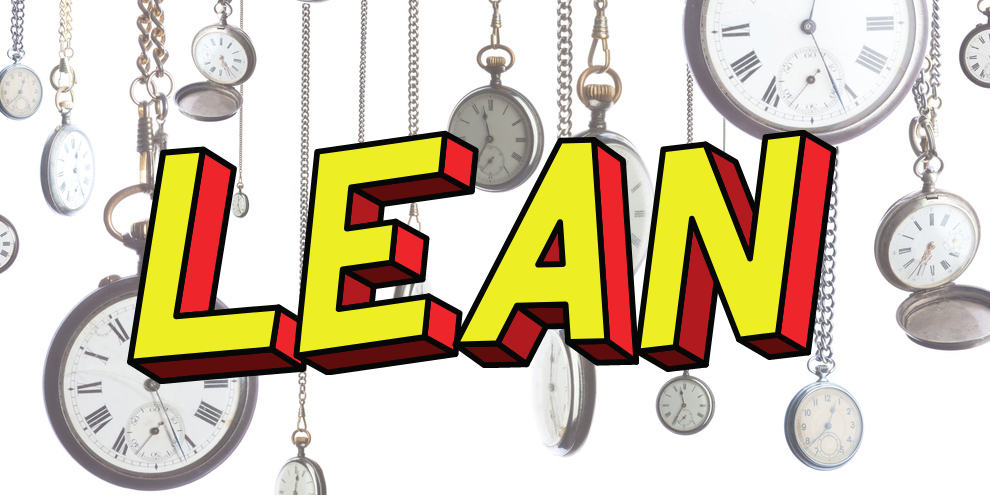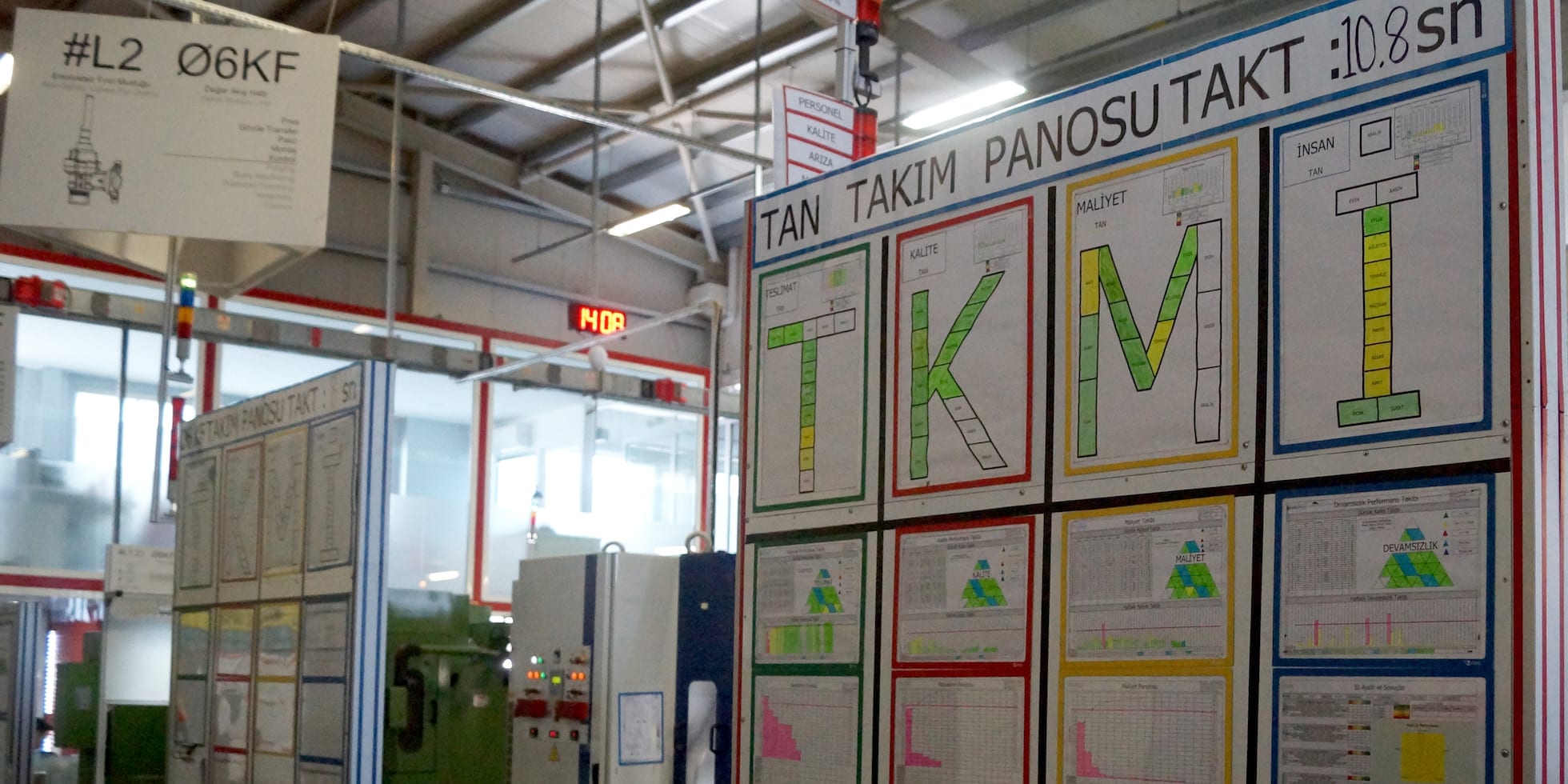
René Aernoudts offers guidelines for lean transformations
FEATURE - This set of guidelines will help you to understand how to properly structure your lean transformation, keeping into account the entire organization as it tries to embrace and manage change.
Words: René Aernoudts, President, Lean Management Instituut
Part of my job is to walk around organizations and help them to see - and ‘solve’ - their problems. It’s ‘solve’ between quotation marks because it often comes down to testing a hypothesis by implementing countermeasures in a very controlled manner, as opposed to squarely fix a problem.
The challenges companies face are varied, and go from reducing the lead-time to making sure the customer doesn’t leave for another supplier or getting people to take more initiatives to improve work. None of them are easy to tackle.
When organizations decide it’s time to improve the way they work, there are a number of elements we tend to see a lot of as we analyze the chosen approach to achieving a lean transformation. Too often, one or more of the following seem to apply to the most common approaches companies adopt:
- The one-size-fits-all approach or the single serve approach: the tendency to force the same plan of attack across the entire enterprise (for example a Kaizen or Rapid Improvement Week, or a 16-week roll-out), with no regard for the local situations and specific challeges a company can be presented with by either the internal or external environment;
- The Hammerhead approach: the tendency to focus predominantly on the implementation of specific tools or a combination of tools, such as set-up time reduction (SMED), 5S workplace organization, or visual boards;
- The radical or The if-it-doesn't-kill-you-it-makes-you-stronger approach: the tendency to simultaneously try to tackle multiple situations, for instance deploying a pull system, introducing a new lay-out, and implementing hoshin kanri (strategy deployment) in one go;
- The superficial approach: the tendency to act without having carried out a thorough analysis of the current state and focusing on the implementation of a set of ‘operations management’ tools. Sometimes such programs come wrapped up in a beautiful package, with their own name, such as The Whatever-the-name-the-company-is Way or The Whatever-the-name-the-company-is Business/Production System. Sometimes even fancier names are used, but whatever we call them, these approaches entail the use of specific lean tools, which they pack and sell as a full system for business transformation (“Do 5S and become lean” or similar slogans). Paying the price of this marketing exercise are often processes and value streams, which get shamelessly neglected. Branding isn’t everything.
Many of these rather limited approaches can bring some positive effect, or otherwise not harm too much, but they also suffer a common problem: they can’t lead to stability and sustainability of results. Implementations will start an inevitable decay as soon as a leader of the pack moves on, a problem reoccurs or interest fades away. Alternatively, when the implementation moves to other areas or divisions, discussions arise or the entire transformation comes to a stop because of power battles people on the floor won’t even see. There are also cases where the knowledge and experience level or the earning model of the (internal or external) consultant erode the chosen approach.
Long story short, I rarely see a well-thought lean transformation that takes into account the organization in its entirety.
However, there are a number of guidelines that can help set the foundations for a successful transformation. There are three ‘sets’ of guidelines you might find useful.
The first set refers to the tasks a lean manager (or at least that manager who is responible for the implementation of lean) should concentrate on, as stated by lean expert Dan Jones:
- To determine what is important for the organization, and to get everyone focused on the vital few;
- To deploy the right improvements that really close the performance gaps between the current and future state;
- To create stable, predictable processes in which value-adding steps are performed in the shortest possible throughput time (flow) and all activities are synchronized (using the same amount of time for each activity), and to remove the obstacles to flow;
- To develop the capabilities of employees in collaborative problem solving and to nurture the future leaders of the organization;
- To prepare the organization to deal with future challenges, looking at them from the customer’s perspective (Who are our future customers? Competitors? What unmet needs are we trying to fulfill? What solutions are clients looking for?)
Here's an example. I was asked to support a management team that was not happy with the company’s performance and decide to attempt to improve using lean thinking. All the plans the organization came up with were written down in a 40+ page report and one year later the management team had to confess that not much had changed.
In a short (two hours, three hours and a full day) session we came to their two vital needs: to reduce failure cost (30% within one year) and to increase the number of contracts won (from 1:6 to 1:3). In just a week, we developed a good understanding of what the gaps were and how we could close them. We looked at how stability, flow and synchronization influenced the two challenges and came up with seven countermeasures that would could be tried out.
These were discussed with employees and management. People on the shop floor were trained and the countermeasures tested and implemented within a few weeks. The results started to appear within a few weeks, and they were staggering. A year later the results were over our expectations, with failure costs going down by 70%. Employees were trained to deepen their understanding of root causes and to come up with countermeasures. The management team started to ringfence time to see what issues could be foreseen and how they could cope and anticipate. This way they got what they had hoped for: to be ‘in control’ of their company again.
The second set of guidelines is based on interviews with Toyota veterans by colleague and lean expert Art Smalley (a Toyota veteran himself). One the one hand, they focus on finding and understanding the key questions (or key challenges or the vital few). On the other hand, they relate to the logic of using specific analytical methods and countermeasures. This second set consists of eight key questions:
- How do you satisfy customers and gain profits at the same time?
- What is the problem (or problems) in the operation?
- How do you achieve jidoka (built-in quality) in each process?
- How do you make just-in-time production and delivery possible?
- How do you standardize the work?
- How are you going to stabilize and improve the availability of equipment and machinery?
- How are you going to develop staff and first-line supervisors?
- How do you ensure sustainable results and build on them?
The first two questions focus on the purpose of the organization; questions 3 to 6 are about process; and the last two questions are about people and how to create a sustainable improvement culture.
Related to each of the results these basic questions refer to, we can see a number of symptoms or problems (some can be caused by more than one of these activities – rework, for example, can be a symptom of points 3, 5 or 6).
Again, each question finds its answer in the set of methods that can be used to identify the root cause of and the countermeasure to the problem it addresses. For example, the way to achieve JIT production and delivery (as per question 4) is using value stream mapping to create insight, or implementing a pull system as a countermeasure. For question 5 and 7 it is using job instructions and standardized work.
This set of questions can help to better understand your problems as an organization, and points you in the direction of the methods and countermeasures you can deploy.
The third set of guidelines is mainly used within Toyota (even though not every Toyota veteran is aware of it) and focuses on the order in which improvement activities should be performed (possibly within the entire course of a transformation).
It is known as OSKKK, which stands for: Observation; Standardization; Kaizen 1; Kaizen 2; Kaizen 3.
Here’s a more detailed description on each of these elements:
1. Observation: by actively observing the workplace and speaking with staff you can see problems arise (see the set of core questions above). Look at multiple cycles of the same process, and several people performing that same process. Try to detect variation, the source of your woos. How many leaders do you know who are actually willing to stand in an Ohno Circle for two hours?
2. Standardization of equipment, movement, tasks and management: prioritize where in the process standardization is critical, explain to all employees which method is considered best practice, and help everyone to learn how to work according to the standard. Eliminate problems and introduce 5S (workplace organization), if useful.
3. Kaizen 1: improve the information and material flow and process. Only after you have standardized is it time for Kaizen 1: using value stream mapping, you can outline the current information and material flow, process and timeline. To determine the objective, ask yourself what you want to achieve with this kaizen. Analyze the situation, determine the countermeasures, and implement the action plan. In general, the focus is on reducing the cycle time so that the real issues on the table can be addressed.
4. Kaizen 2: improve the equipment. If you have more than one type 1 Kaizen running and you have come to the limit of what can be achieved, start working on improving equipment. If you rely on machinery to complete your work, then you are going to work on reducing the changeover time, accelerating machine speed, simplifying your equipment, etc. This type of Kaizen generally calls for some investment.
5 . Kaizen 3: improve the layout. Only when you have gone through the other two types of Kaizen can you move on to Kaizen 3 to improve the layout of your workplace. This type of Kaizen usually requires considerable investment, so it’s better to focus on Kaizen 1 and 2 first. Based on various data (from value stream maps, OEE , products, etc) you will come up with at least three alternative proposals for a new layout, all of which apply lean principles. You can effectively test the new layout by using cardboard mock-ups to simulate the process.
Too often we see people quickly start running kaizen events without fully understanding what the situation is and what the potential issues that will arise are. In technically-oriented environments especially (where most of the people employed have technical skills), Kaizen 2 and Kaizen 3 are very popular, and people prefer to drop Kaizen 1 because it is perceived as being too difficult. It requires working with people, and that’s difficult: after all, you will need many people to collaborate and different working methods to co-exist. Plus, social interaction will require your full attention.
So here they are, the three sets of guidelines that can help you to shape your lean transformation. Don’t forget that every good transformation is characterized by the application of PDCA to the transformation process itself. So keep learning, adjusting and testing. This will require some explaining, understanding and courage at first, but it will ultimately facilitate the transformation of your organization, and yourself. Good luck!
THE AUTHOR

Read more


FEATURE – Is there such a thing as a lean plan? There is, but it's not an off-the-shelf solution that will appease your boss – and that's why traditional, bureaucratic organizations continue to exist.


FEATURE – With one of the biggest lean events of the year just four days away, John Shook tells you why you should participate and what you can expect.


NOTES FROM THE GEMBA – Follow Catherine on another one of her gemba walks around French companies. This time, she visits a manufacturer of inspecting machines near Bordeaux, with a visionary leader and a great story.


CASE STUDY – A Turkish producer of gas valves for kitchen appliances has discovered the power of the lean principles of pull and flow, reaching results beyond its imagination.

